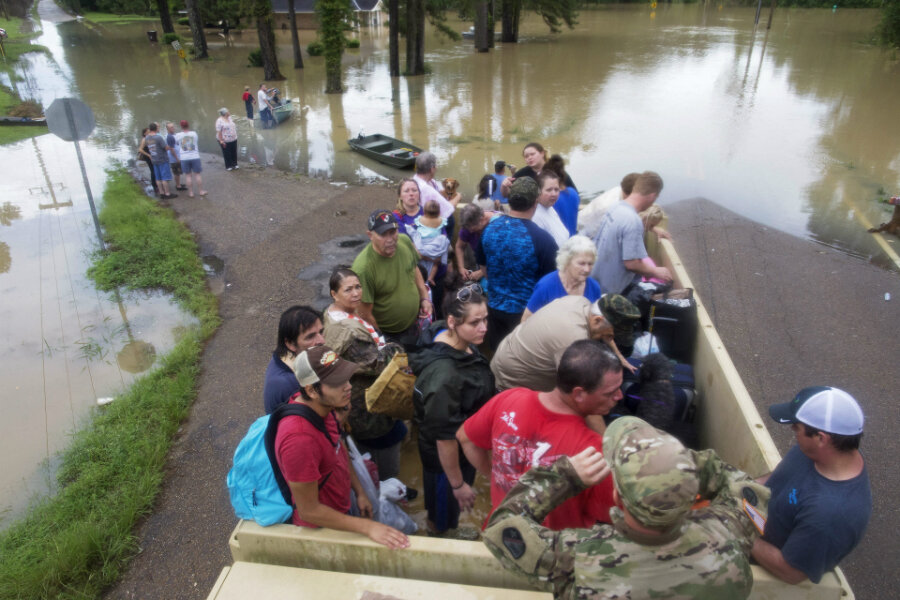Why US military officials are worried about climate change
Loading...
A group of former top officials from US military and national-security agencies have endorsed three documents warning of climate change's "strategically-significant risk to US national security" and calling on the next president to create a cabinet position dedicated to managing the problem.
One of the documents, published on Wednesday by the Washington-based Center for Climate and Security and signed by a panel of retired military officials, pointed in particular to the risk posed to coastal military installations by increasingly frequent extreme weather events.
"The complex relationship between sea level rise, storm surge and global readiness and responsiveness must be explored down to the operational level, across the Services and Joint forces, and up to a strategic level as well," it said, according to Reuters.
A growing number of military and intelligence officials have come out in support of enhanced measures to prepare for risks posed by climate change. The officials hail from a traditionally conservative sector of government, though one typically averse to public stances on partisan issues, creating a notable counterpoint as the Republican Party swings further to the right on climate change. In its 2016 platform, the GOP called the framing of climate change as an important national-security issue "the triumph of extremism over common sense."
But the idea is already something of an orthodoxy among many officials in that community. In 2014, then-defense secretary Chuck Hagel warned in a speech outlining the Pentagon's response plan that climate change had the potential to increase demands on the military to help provide humanitarian assistance and disaster relief if the frequency and intensity of storms continues to grow.
"Our coastal installations are vulnerable to rising sea levels and increased flooding, while droughts, wildfires and more extreme temperatures could threaten many of our training activities," he said at the time. "Our supply chains could be impacted, and we will need to ensure our critical equipment works under more extreme weather conditions."
A growing body of research pointed to one aspect of what Mr. Hagel called the "threat multiplier" effect, The Christian Science Monitor reported in 2015, as global temperatures rise, the risk of violent conflict may rise with them.
Before civil war broke out in Syria in 2011, the country experienced a devastating three-year drought. Subsequent crop failures and a mass migration of farming families helped catalyze political unrest, according to a study by earth and social scientists published earlier this year. That unrest ultimately led to the violence that has since engulfed the country.
And Syria is not alone. In a report ... the White House said climate change would act as “an accelerant of instability around the world.” Researchers found in a separate study that one standard-deviation change in heat or rainfall boosts the risk of a riot, civil war, or ethnic conflict by an average of 14 percent.
In March, the Monitor noted that globally, many cities have infrastructure located near coastlines that scientists say could be threatened by sea levels rising over 50 inches by 2100, barring changes in human behavior.
Not only are cities like New York, Boston, San Francisco, Los Angeles, and more located along the coast, but Internet cables, sewer lines, piping, and other infrastructure are also vulnerable to rising sea levels.
To respond to rising sea levels, countries must both adapt to changes and mitigate the causes of sea level rise. If countries reduce carbon dioxide output enough that it peaks by 2040 or 2050, says Horton, sea level rise by 2100 could be half as severe as if the world continues with “business as usual.”
“The urgency is dire,” says Horton.
The difference between no response and a concerted effort to reduce emissions and slow sea level rise, he describes as "an economic watershed, the difference between having a prosperous society and a society in chaos."
The risk to cities was underscored too by research examining the floods that devastated Louisiana last month which revealed that rising temperatures about doubled chances for such heavy rainfall. It marked "one of the first times researchers have been able to draw a connection between how Earth's climate has changed over time and how singular, specific weather disasters occur as a result," The Monitor reported.
"There are few easy answers, but one thing is clear ... inaction is not a viable option," stated the Center for Climate and Security, according to Reuters.
This report contains material from Reuters.








